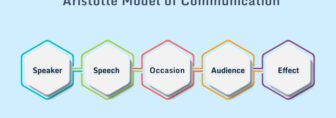What Are The Five Main Objectives Of Epidemiology?

Imagine your aunt gets sick, and the symptoms are strange and not indicative of a common illness. Is it your nature to go looking for logical answers? If so, the science and study of epidemiology might be right for you.
Epidemiology is the study of health-related events and sicknesses in a group of people to apply that knowledge to improve future health outcomes. Nurses are on the front lines of epidemiological data collection and intervention.
Nurses have a crucial role in helping doctors understand symptoms and health issues so they can make accurate diagnoses. Epidemiologic researchers can use the information to learn why a patient or group of people get sick so they can apply that information to prevent future illnesses and diseases.
If that sounds like a career you would love, perhaps you should start on the path of earning a degree in one of the entry-level nursing master’s programs currently available. Collecting epidemiologic information will be a critical part of your daily tasks as a skilled nurse, so let’s look at the five main objectives of epidemiology.
The Five Main Objectives Of Epidemiology
According to the CDC, epidemiology has five main core tasks. Multiple health professionals, including laboratory researchers, physicians, statisticians, nurses, and many others, use the information to determine why communities have outbreaks of disease and illness and how the spread can be minimized. They are like disease detectives who ask questions and collect data to learn how a disease or illness started.
Each of the five epidemiology objectives helps contribute more factual information to help health officials deal with disease and illness outbreaks more efficiently.
Public Health Surveillance
Public health surveillance refers to collecting, analyzing, and interpreting health-related data so recommendations can be made to protect the public from spreading contagious illnesses and diseases.
The purpose of public health surveillance is to collect information that guides decision-making for the public good, including:
- To identify ongoing patterns of disease occurrence
- To apply control measures to limit the spread
- To determine preventive measures to eliminate the occurrence
- To evaluate morbidity reports to collect important health information
Three types of public health surveillance methods collect data to improve the lives of the public. These are part of the information for action:
- Passive surveillance occurs when healthcare providers like nurses, doctors, lab researchers, and other professionals collect and report cases of illness and disease to the municipal health department.
- Active surveillance happens when the municipal health department asks healthcare providers for information on illnesses and diseases from their patient population.
- Syndromic surveillance occurs in real time through digital means. The goal is to notice indicators of illnesses and diseases before it spreads to the public. Examples are cases of flu, gastrointestinal illnesses, and viruses with rashes and fever.
Read Also: Chronic Care Management Software Benefits
Field Investigation
When a health department or another healthcare provider reports cases of illness or disease, the field investigator contacts multiple healthcare-related professionals to gather information. The investigations often show unreported illnesses that can spread to healthy people.
Most investigations are to learn:
- The natural history of a disease or illness
- The clinical spectrum
- Any descriptive epidemiology
- Various risk factors for the disease or illness
When conducting a field investigation, these factors are crucial to deciphering data that can be combined with good judgment for preventing the further spread of diseases and illnesses:
- The investigation must be timely.
- The investigation addresses an important public health concern.
- The investigation examines resources quickly.
- The investigation uses appropriate data for decision-making.
- The investigation uses expertise from microbiologists, toxicologists, psychologists, anthropologists, lab scientists, informatics, and other pertinent healthcare providers.
- The investigation focuses on the etiology of the disease or illness.
- The investigation identifies evidence-based options for solutions.
- The investigation is conducted with other professionals who have the authority to approve the solutions.
Analytic Studies
Often, surveillance and field investigations are not enough to identify causes, methods of transmission, and acceptable solutions alone. This is when analytic studies can test the hypotheses for accuracy. To do this, you would use a control or comparison group.
The steps of an analytic study are as follows:
- The study design involves finding:
- A research strategy
- Writing justifications and protocols
- Determining sample sizes
- Choosing a comparison group
- Designing questionnaires
- Conduct involves:
- Securing approvals
- Adhering to ethical principles
- Abstracting records
- Interviewing subjects
- Collecting specimens
- Managing the data collected
- Analysis involves:
- Describing the characteristics of the subjects
- Creation of comparative tables
- Computation of measures of association
- Tests of significance
- Stratified analysis
- Regression
- Modeling
- Interpretation involves:
- Putting the findings into perspective
- Identifying the key messages
- Making sound recommendations for slowing the spread to other people
Evaluation
The process of evaluation utilizes systematic and quantitative approaches to determine the viability and impact of the chosen goals regarding the disease or illness.
Effectiveness addresses the ability of a course of action to produce the intended outcomes, while efficiency refers to how quickly the actions will produce the intended outcomes.
An example would be the evaluation of immunizations for a disease or illness. Epidemiologists would be looking for the efficiency of the immunizations, how much of the target audience received immunizations, and the statistical impact the immunizations had on the target audience.
Linkages
Most epidemiologists operate on a team with other epidemiologists and healthcare providers. Team members can come from other scientific disciplines like nurses, infection control, sanitarians, laboratory scientists, and clinical staff from hospitals and other facilities.
Linkages also involve other geographic locations, federal agencies, educational institutions, and clinical facilities because outbreaks rarely happen and remain in one place. The relationships with other professional organizations and state and local governments reinforce the sharing of information and hypotheses. This networking is a valuable epidemiological tool.
Policy Formation
Recently, the epidemiological objectives were expanded to include a sixth task, policy formation. Epidemiologists naturally become involved in the public sector since their study of diseases and illnesses affects communities which can eventually expand to the world.
As a result, they are uniquely qualified to recommend proper prevention for populations. Epidemiologists work in public health, where they should be able to offer their expert opinion about disease control strategies, reportable disease regulations, and broader healthcare policies.
What An Epidemiologist Does
An epidemiologist studies how health issues affect communities. They ask many questions to collect information that can help them understand how a disease or illness began so they can prevent it from happening again. Another goal of epidemiology is to reverse the effects of the disease as much as possible.
An epidemiologist does several significant things by using the “Five W” questions, including:
- Who: Epidemiologists ask the question, who is affected? Is the entire country, the world, or a small community involved?
- What: What is happening to impact the community? Is it a disease like cancer or an infectious illness? This helps define the issue so they can devise a solution to slow the spread or stop the disease.
- When: When did the illness or disease first appear? Once the initial case has been identified, an epidemiologist can begin looking at factors that might have influenced the sickness.
- Where: Where was the illness or disease first reported? From there, an epidemiologist can track the spread to understand transmission better.
- Why: Why did this occur when it did? An epidemiologist always looks for a way to understand how to help reduce or remedy the problem.
Careers For Epidemiologists
As with other healthcare-focused careers, the opportunities to become an epidemiologist through earning an entry-level nursing master’s degree are exploding. Consider all the ways you can impact healthcare in your area as an epidemiologist.
Academic Research Epidemiologist
As an academic research epidemiologist, you would work at a university or other higher education institution. Your role would be to focus on research that addresses the origins, spread, and possible solutions to illness and disease.
Applied Epidemiologist
An applied epidemiologist focuses mainly on the analytical part of epidemiology. In this role, you would track disease and illness within a population. Your job would also entail finding disease indicators and addressing the diseases moving through a population at any given time. Your findings could impact public policy about disease prevention.
Climate Health Epidemiologist
A climate health epidemiologist studies how climate, exposure to heat, wildfires, and other natural elements affect the plant life, wildlife, and infrastructures of an area. You would develop a plan of action to combat the effects of those changes on the plants, animals, and forests.
Clinical Trial Research Epidemiologist
A clinical trial research epidemiologist works in the medical industry. You would work to gain evidence that a certain medicine or product works to alleviate a specific medical condition. Your office would be a laboratory where you conduct experiments and evaluate data from clinical trials.
Epidemiology Investigator
An epidemiology investigator researches the risk factors and causes of diseases. This applies especially to illnesses and diseases that are trending and how they are spreading among the population. Many epidemiologists focus on rural areas.
Field Epidemiology
As a field epidemiologist, you would focus on urgent issues with public health. You would respond quickly to identify the causes of sickness and find solutions to critical situations. You must test solutions often before you truly understand the illness because you are working to minimize the risks and loss of life.
Clinical Epidemiologist
A clinical epidemiologist works in a hospital setting. You would work to apply statistical research and possible solutions to sickness in the hospital with the goal of improved patient care. Along the way, you would collect data that can help identify at-risk populations and reduce the likelihood of illness.
Infection Control And Prevention
This specialized position focuses on disease prevention in a specific group of the population. As you identify risk factors for this group, you will work to educate them and minimize the spread of disease and illness. Working in the community, your job would be to reach as much of the community as possible to reduce the risk factors.
Molecular Epidemiologist
This new area of epidemiology focuses on genetic factors that affect at-risk individuals and groups. You would investigate risk factors at the molecular level to help those who have genetic markers for a certain disease. By combining molecular research and epidemiology, you can work to prevent specific diseases from spreading within populations, groups, and individuals.
Pharmaceutical Epidemiologist
As a pharmaceutical epidemiologist, you would work with pharmaceutical companies to develop drugs to help at-risk populations. As you analyze data and perform research on a certain population, you can identify diseases that need treatment in a group of people. Your focus on the management and control of diseases can be crucial to the improved health of many people.
Epidemiology Statistician
If you like working with numbers and statistics, the role of epidemiology statistician could be right for you. You would collect information and data about a group of people within a population and use it to project possible outcomes. The data can also help other groups with similar risk factors by preventing sickness from spreading.
Veterinary Epidemiologist
You can combine your love of animals with epidemiology research to identify diseases and illnesses within animal populations. By applying research and data-driven information to veterinary science, you can work to improve veterinary practices within a specific location or a certain animal breed.
You can start your career as an epidemiologist with a Master of Public Health that takes your nursing background and applies your clinical experience to understand the causes and factors of diseases and sicknesses. Whether in a clinical setting like a hospital or working with a group of at-risk people, educating them on disease prevention can have a dramatic impact on the improved health of communities.
Read Also:
































